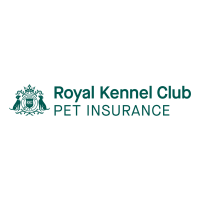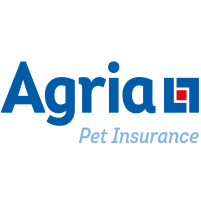Last updated: 02/01/2026



January only. Get up to £45 Amazon.co.uk gift card when you purchase a ManyPets plan.
Thousands of pet owners nationwide voted ManyPets the Pet Insurance Provider Of The Year four times between 2025 and 2021, with MoneyfactsCompare.co.uk Awards. With over 22,000 5* Trustpilot reviews, choose peace of mind with ManyPets.
*see website for details


Napo Pet Insurance
Use code 'NAPO5' for 5% discount on policies
*Dental cover includes tartar removal and extractions. Treatments must be prescribed and performed by a registered vet.
**Pre-existing conditions are covered if your pet hasn’t had symptoms, treatment, medication, or advice for it in the last 24 months.


Use code 'MF25' for a £25 Amazon gift card redeemable at checkout*
Award winning pet insurance provider, fighting for fair insurance for cats and dogs.
* Terms & Conditions apply
** subject to acceptance
† only available on the Lifetime Plus policy


At Frank we focus on what really matters: putting your pet first.


We believe that pets deserve the best treatment, to get them back on the mend should the unexpected happen. Our policies and exceptional customer service have been designed to make pet insurance straightforward. Having a pet become unwell or injured is stressful enough, that’s we’ve developed a claims process that won’t have you chasing your tail. We can’t stop your pet becoming poorly, but we can help to make things straight forward at a stressful time. Our team are experts in pet insurance and can help make the process of buying pet insurance or making claims straight forward.


You want the very best for your dog, cat or rabbit, and so do we. We offer three pet policies – just choose the type and level of cover you need!


Petplan is the UK's No.1 pet insurer*
*Source Mintel Pet Insurance Report July 2024


Here at NOW Pet, we do our best to keep things simple. We offer straightforward, fuss-free insurance for dogs and cats, so you can spend more time on what matters most - enjoying your pet!


Whistle & Wag
We are proudly British and our UK based customer success and claims teams will be there whenever you need us. Join the club today and experience pet insurance like no other.


Purely Pets
Purely Pets is an insurance provider who’s dedicated UK team can help you find the right level of cover for you and your beloved pet in an easy, simple, and transparent way.
*Moneyfacts 5* rating applicable to Dog and Cat vet fees from £6000+.


5-star MoneyFacts rated for Platinum £10k Lifetime Cover pet insurance for your 5-star pet
Our pet insurance is rated Excellent on Trustpilot* and includes:
Exclusions apply for pre-existing or illnesses within the first 14 days of the policy start date.
* Based on 2024 data


Perfect Pet
Looking for top-rated pet insurance? Look no further!
Perfect Pet Insurance is proud to have Moneyfacts 5-Star rated products, and we pay 97% of claims within just 5 working days. Plus, our customers enjoy exclusive rewards and discounts! You can trust us to keep your furry friends protected. Get peace of mind and amazing benefits with Perfect Pet Insurance today!


Royal Kennel Club
Protect your dog with the UK's Number 1 Pet Insurer.


Only Paws Pet Insurance
We believe that protecting your pet is one of the biggest gifts you can give them. That’s why we make it our mission to make your pet insurance experience as seamless and carefree as possible and reward responsible pet ownership with premium discounts.


Spot On
We are pet insurance specialists, backed by years of expertise and powered by innovative technology. At Spot On we focus on being efficient, reliable and giving you value for your money.


Keep your furry friends happy with Asda Pet Insurance. We’re here for the unexpected vet visits and the peace of mind in between.
Get comprehensive protection for your cat or dog with ASDA’s flexible pet insurance plans — from simple 12-month “Time Limited” cover to full “Lifetime” protection.
Optional extras: cover for complementary therapies, boarding costs if you’re hospitalised, and liability cover for dogs.
ASDA Pet Insurance helps ensure your pet gets the care they need. Get a quote today and choose the cover that fits you and your pet.




Pet insurance policies for dogs, cats and rabbits


Post Office
Moneyfacts Star Rating: 5 Stars
We pay 98% of Claims in 5 working days.*
Get peace of mind with Post Office Pet Insurance with vet fee cover up to £7,000^ per policy year on cat & dog policies and up to £2,000^ per policy year on rabbit policies, and unlimited access to our 24-hour vet helpline, live chat and video. Plus, cover for local advertising and reward should your pet be lost or stolen. Personalised quotes available now - benefit from multi-pet discount^^ if you insure more than one pet.
*Based on Pinnacle Insurance pls Claims Data between February 2024 and March 2025.
^An excess is applicable to all vet fee claims. Your vet fee excess can change if your circumstances change. Also, when your pet reaches a certain age, it will change from a defined amount to a sum that will be the greater of the defined amount or a percentage contribution.
^^Multipet discount is a maximum of £24 when insuring more than one pet as this is worked out as £1 per pet per month for each policy.


From queasy kittens to poorly puppies, our pet insurance has your cats and dogs covered.
Why choose LV=



Waggel
GET YOUR FIRST MONTH FREE
Simple, affordable, and up to £15,000 coverage packed with perks - see why thousands of pet owners choose Waggel Lifetime Pet Insurance for protection and peace of mind.
Lifetime pet insurance with up to £15,000 Annual Limit that covers:


Healthy Pets Pet Insurance since 1996
Established in 1996, Healthy Pets is one of the longest-established pet insurance brokers around. Benefitting from over 25 years’ experience, rest assured you are covered by people who care as much about your pet as you do.
With Healthy Pets you can:


Tesco Pet Insurance is arranged, administered and underwritten by Pinnacle Insurance Ltd. Tesco Personal Finance Ltd acts as an introducer to Pinnacle Insurance Ltd which is authorised by the Prudential Regulation Authority and regulated by the Financial Conduct Authority and the Prudential Regulation Authority (register number 110866). Registered Office: 4th Floor, Limelight, Elstree Way, Borehamwood, Hertfordshire, WD6 1HJ. Tesco Personal Finance Ltd and Pinnacle Insurance Ltd are not part of the same corporate group.
Tesco Insurance is a trading name of Tesco Personal Finance Ltd, registered in Scotland No SC173199. Registered Office: 2 South Gyle Crescent, Edinburgh, EH12 9FQ. Authorised and regulated by the Financial Conduct Authority.
Links to third parties on this page are paid for by the third party. You can find out more about the individual products by visiting their site. Moneyfactscompare.co.uk will receive a small payment either if you click the links or if you use their services after you click through to their site. All information is subject to change without notice. Please check all terms before making any decisions.
DisclaimerThe list of pet insurance providers on this page is a selection of services available and gives you an idea of the kind of options available. You can find out more about the individual products by visiting any of the providers listed. All information is subject to change without notice. Please check all terms before making any decisions. This information is intended solely to provide guidance and is not financial advice. Moneyfactscompare.co.uk will not be liable for any loss arising from your use or reliance on this information. If you are in any doubt, Moneyfactscompare.co.uk recommends you obtain independent financial advice.
Simply put, pet insurance is a policy you can buy to help minimise medical expenses for your pets if they become ill or injured, by covering some if not all of the costs of veterinary treatments or operations.
Many pet owners consider their beloved cat or dog as one of the family. Unfortunately, when a pet falls ill the vet’s fees can quickly mount up. Pet insurance is there to help you pay for the veterinary costs should your cat, dog or other domestic pet becomes sick or is injured.
In addition, if you choose you can expand the cover to include a range of other perils, such as public liability (if your dog attacks and injures another animal and/or person or it damages someone else’s property), the cost of keeping your cat or dog in a cattery or kennels if you fall ill and must go into hospital or temporary care and even the replacement value if your animal is stolen or lost.
Ultimately, pet insurance is important as it helps you to look after your pet, and in some cases, could be the difference between getting them treated or having to be put down.
When looking for the best pet insurance for you, consider the one that caters best to the needs of your pet, including coverage for any underlying conditions they may have, even if this means paying more compared to other policies.
Most people tend to buy pet insurance for their cat or dog; however, it’s perfectly possible to insure a range of domestic animals, such as hamsters, rabbits, guinea pigs or anything else you may find in a pet shop. This also includes certain types of birds, like budgies or parrots.
Pets which you keep for the purposes of racing them, such as greyhounds (unless they are retired) or pigeons, may cost more to insure (or may be declined entirely) due to the higher likelihood of them being injured or lost.
Of course, pet insurance is available for the not-so-common pets too, so if you have an exotic animal, such as snakes, lizards, spiders – even tropical fish – you can still find there’s a policy out there for you.
Horses and ponies aren’t covered under domestic pet insurance but can still be insured by an equine insurance provider.
No, you’re not legally required to have pet insurance in the UK, but as mentioned, it can be a cost effective way to take care of your pet should they need an otherwise costly medical treatment.
It’s also worth considering that pet insurance with public liability cover can help manage the costs of any damage your pet may have caused, as well as legal representation expenses if necessary.
The cost of your pet insurance can vary tremendously depending on what type of animal you are insuring, their age and what is covered under the policy. Insurance which has higher limits, more comprehensive cover and greater benefits will cost more than those offering basic cover for a limited number of risks.
The cost of pet insurance however is small compared to the £100s and even £1,000s you could have to pay in vet’s bills if your furry friend gets seriously ill or injured.
At the most basic level you can buy pet insurance policies which work perfectly to cover you against unexpected vet’s bills for illness or injury.
These include the cost of drugs, any surgeries required and even physiotherapy to help your pet recover. Some policies will also cover the cost of non-standard treatments, such as acupuncture, homeopathy and behavioural therapy.
However, it’s important to note that some things – such as the cost of regular check-ups, vaccinations, booster shots, anti-flea treatments and grooming – will not be covered. For more information see the section on What is excluded from pet insurance? below.
Pet insurance also often covers the value of your treasured pet, should they die due to illness, accident, be lost or even stolen. While the average cat or kitten might be bought for less than £50 – often they are free to a good home – pure-bred pedigree cats can have a value measured in the hundreds and even thousands of pounds, as can many dogs.
Exotic pets by their very nature tend to be rarer and cost far more than ordinary domestic pets. While no sum could truly make up for the loss of your furry friend at least this will compensate you for your basic financial loss.
In cases where a pet goes missing some insurance policies will cover you up to a set limit to advertise for your lost pet and even offer a modest reward for finding the animal and returning it to you or for information that leads to a conviction if the pet was stolen.
As mentioned previously pet insurance can also include an element of public liability cover should your animal injure someone or do damage to their property (including another pet or livestock). This cover is normally reserved for dogs, but it can also be extended to venomous exotic pets too.
Many pet insurance policies may also cover the cost of boarding your cat or dog at a cattery or kennels, should you have to go into hospital or into temporary care. Often these boarding charges are only claimable for periods over four days, if the costs exceed a certain limit – such as £500 – and have an upper limit to all payments – say, up to £2,000 for any single occasion.
Some policies will cover your pet for all or some of the above events while you are abroad (see section below Do pets need insurance to travel abroad?). This is great if you have a second home overseas which your pet might travel to with you.
There are several different types of pet insurance which affect what you are covered for, if there is a limit on what you can claim and how often per year.
See the section below What types of pet insurance are there? for more information.
There are some things which you cannot insure against or claim for with pet insurance. What you are insured for will differ depending on your policy and provider. This is one of those occasions where you really should read the small print!
• Dental care (check carefully!). Some policies will cover this at an additional expense or even as part of their standard cover. However, some will not cover dental treatments for your pet at all or may have a limit on cost of treatments. Check your policy carefully and make sure this is in place if necessary. In all cases cosmetic dental work will not be covered.
• Pre-existing health conditions (see section below How does pet insurance work for long-term conditions?)
• Regular health check-ups, vaccinations and immunisations (including booster shots)
• Grooming costs – Including claw-clipping, de-matting and cosmetic procedures
• Routine and preventative treatment – This includes flea, tick and worm treatments, spaying and castration costs
• Pregnancy – Some policies may exclude claims related to pregnancy or your pet giving birth - Be sure to check
• Euthanasia and cremation costs- Some policies do not cover the cost of having your pet put to sleep and/or the costs of cremation. In addition, if these are covered then there may be policy limits which restrict how much they will pay in these circumstances. Again, check your policy carefully.
Always make sure you know what is covered by your pet insurance policy and what isn’t – Don’t find yourself in the unenviable position of having paid a premium only to find out later that you aren’t covered when the worst happens.
Pet insurance falls into four types: Lifetime, maximum benefit, time-limited and accident only.
This is the most comprehensive cover level and so is usually also the most expensive. However, it does provide the widest level of cover for your pet. Lifetime insurance means that you will be able to claim up to a set amount (detailed in your policy) every year that your pet is covered – for example, cover may stipulate a maximum total of £10,000 per year.
These limits ‘reset’ every year so in the example above you’d be able to claim up to £10,000 of treatment every year. Any costs over and above this will not be covered – For example, if the total value of your pet’s treatment comes to £13,000 in a single year you can claim up to £10,000 of this but you would have to pay the remaining £3,000 yourself. Lifetime pet insurance policies tend to set limit either by condition per year or lifetime annual cover (which works like a total overall limit per year).
• Per condition per year limit. This is where there is a limit to how much you can claim for per condition each year. For example, the limit could be £2,000 per year for your cat’s liver disease and £1,000 for skin conditions per year so these would be the maximum amounts you could claim annually. Again, these limits reset at renewal every year.
• Lifetime annual cover. This cover provides an overall limit to how much you can claim over the period of one year. For example, cover may limit the total amount for all claims to £5,000 per year.
Both types of lifetime cover will reset on an annual basis (so long as you renew your policy with that provider and don’t go elsewhere) so your pet can have ongoing treatment for the remainder of its life.
These may also be called per condition policies or money limited policies.
This type of policy often has limits which will not reset even when you renew so your pet will only be covered up to the policy limit for this condition for their lifetime, regardless of whether you renew with that insurer after a year. Once you have claimed for treatment up to this limit you will have received the ‘maximum benefit’ available under that policy. You will be responsible for the remainder and any further costs for this condition, even if you renew the policy with the same insurer.
As ever, check the small print carefully for details of the limits your policy will impose in any treatment before you buy to ensure you are getting the cover you want for your pet.
This type of policy normally covers a pet for both injuries and any illnesses. However, these are limited to fixed limits in both how long you can claim for, as well as how much the insurers will pay for treatment. Normally claims are limited to around 12 months from when your pet falls ill or suffers an accidental injury.
When the time or monetary limit has been reached you will no longer be able to claim for your pet’s treatment. This applies even if you renew the policy.
This is the lowest level possible to obtain for your pet and is the cheapest to obtain. It’s likely that the cover levels will be lower than lifetime or annual policies and feature larger excesses.
Accident cover does not insure against illness at all but only treatment if your pet suffers an accident (such as being hit by a car).
All pet insurance policies are likely to carry some form of excess. For example, if your pet’s policy has a £250 excess this means that the insurers will not pay for the first £250 of any claim.
Most policies also charge a percentage of the amount outstanding after the excess has been deducted, this will vary depending on the age of the animal.
Different excesses may apply for different conditions, treatments or pets as well so check your policy carefully.
Whether pet insurance is worth it or not ultimately comes down to individual preference. There’s always the risk that opting for a cheaper policy, or no cover at all, could lead to you losing out later down the line, so having your pet insured can give you peace of mind.
This being said, putting the money you would have spent on insurance into a high-paying savings account could generate worthwhile returns, if given enough time to grow. This pot could then theoretically be used to cover your pet’s medical bills if required, though you’d have to weigh up the un-subsidised price of any treatments against the cost of the insurance policy to ensure you don’t end up worse off.
Keep in mind, there are a couple of factors that can influence the price of your pet’s policy, including:
• Age – Older pets will cost more to insure and may not get cover at all
Medical history – You will have to declare any medical problems which your pet has already suffered. These can increase the premium or the risk may be excluded completely from cover (Never be tempted to lie or simply not disclose this kind of information – this is illegal and can result in both prosecution and your policy being cancelled)
• Type and breed of pet – Dogs tend to attract a higher premium than cats. Exotic pets and pedigree breeds will also tend to increase the premium you can expect to pay. However, on the plus side, some insurers offer multibuy discounts if you are insuring more than one animal.
The best pet insurance for you will likely be a policy which gives a level of cover you are happy with at a price you can comfortably afford. Of course, you can always choose to pay monthly to spread the cost of most pet insurance premiums but remember that you’ll probably be charged interest for doing so.
Again, your pet’s age is usually one of the main contributing factors, however, there are a few other reasons why your insurance policy could increase over time.
Advances in diagnostic and surgical procedures, as well as rising staff salaries often drive up overall veterinary running costs, which, without subsidy, can see bills skyrocket over relatively short periods.
There’s also the effect of general inflation to consider, though you may find your insurance premiums rise at a faster rate than your income, which could further stretch your finances.
If you find your pet insurance is becoming too expensive, it may be time to consider reviewing your cover. Our chart above can help you compare the latest policies to find the right one for your situation.
As your pet ages, they may start to develop long-term conditions, especially if they’re a pedigree breed that may be prone to certain issues. For a condition to be classed as pre-existing in the eyes of an insurer, any symptoms must have been present before any cover was taken out. For example, if it is known that your dog has liver problems before you take out the policy you will probably not be able to claim for treatments or death specific to this cause. If, however, your pet’s condition is diagnosed after 14 days from the start of the policy this will likely be covered (subject to your policy’s cover, terms and exclusions).
What’s more, if your pet has a family history or a tendency in the breed to develop certain health problems, you must declare this when taking out the policy. Most insurers will accept the risk if your pet is not showing any signs of this condition when the policy is taken out (although you may be charged a higher premium). If your pet subsequently develops this condition 14 days or more after the policy starts and you have ‘unrestricted’ cover then you will be covered (subject to your normal policy conditions, limits and exclusions).
If a standard insurer won’t cover your pet’s condition, you can still find the coverage you need with a specialist policy. While more expensive, these policies offer reassurance that you can claim for you pet’s condition when needed and may work out to be more cost effective should they need regular treatment.
Yes, in most cases it is possible to switch pet insurance providers, even if you’re midway through your current policy.
Actively comparing other policies can be a good way to minimise the costs of pet insurance, particularly if you’ve recently been hit with a significant price hike. From there, consider whether switching to another policy (which could include paying any cancellation fees) is worth it, especially, as there could be a brief period during the switch when you have no cover.
Keep in mind, switching providers becomes a little more complicated when dealing with any underlying conditions with your pet, as your new insurer will have to decide whether to provide cover, even if your current provider already does. Because of this, it’s important to read the fine print of any new policy to ensure your pet is covered for what they need.
If you’re thinking about getting a pet, or are a seasoned pet-owner, you may be wondering what happens if you cannot afford treatment. This problem could arise of you don’t have pet insurance or your pet develops a condition not covered by your policy, resulting in having to pay the full unsubsidised cost of a medical procedure or medication.
If this happens, depending on the clinic, they may refuse treatment (or recommend euthanasia) if a payment cannot be made, though a vet should not unreasonably withhold first-aid or pain relief in emergency situations. Because of this it’s crucial to speak to your vet to see what options are available.
In certain circumstances, your vet may be able to offer a payment plan to help you cover the cost of the treatment or recommend cheaper alternatives as a compromise (though this may mean further treatments are required later down the line). In the case of the former, make sure to consider if these payment plans charge interest as this could mean paying more than the original cost of the treatment over time.
You could also consider seeking out other clinics that may have more reasonable pricing or turning to charities that may be able to help cover or subsidise costs if you meet certain criteria. The People’s Dispensary for Sick Animals, or PDSA, for example, is a charity that can offer low-cost or even free care for eligible pet owners, so make sure to research each option carefully before making a decision.
While not a legal requirement, having cover for your pets while abroad can help protect you against any unexpected costs while away. You’ll find that some pet insurance policies may include travel cover as standard, while others include it as an optional add-on for an additional cost. Most of these policies will cover travel for your pet up to around 90 days, but this can vary between providers, as can the number of trips you can take in a certain period.
Be aware that since Brexit, rules on taking your pet into the European Union (EU) have changed. For instance, unless issued in the EU or Northern Ireland, you can no longer use a Pet Passport to travel to an EU country with your pet, including assistance animals. As part of these new rules, known as the Pet Travel Scheme, you’ll now need to make sure your pet is microchipped, has been vaccinated for rabies, and has an Animal Health Certificate (AHC).
Pet travel insurance can cover a range of scenarios, including but not limited to:
• Emergency vet fees while abroad
• Costs to house your pet should they be quarantined upon arrival in your destination.
• Cancellation of your trip as a result of your pet dying or in need of emergency care.
• Repatriation costs, to help get your pet back home if they become ill or injured while abroad.
Note, as with regular pet insurance, things like you pet’s age or any pre-existing conditions may affect your coverage so make sure you’re aware of what you can claim for before travelling.
Not as such, but there are some insurance providers that will cover a certain array of behavioural issues in pets, usually when diagnosed by a vet or animal behaviouralist.
Some of the most common problems that may be covered can include anxiety, aggression or destructive behaviour, with the policy paying out for training or medication. However, note that pre-existing problems may not be covered.
Pet insurance policies normally carry a waiting period of 14 days from when the policy starts. No claims are covered within this 14-day period but after this your insurance operates as normal.
Consequently, when looking for the best pet insurance for your situation, be cautious regarding any policy that offers ‘instant’ cover.
In cases where the treatment is on-going, insurers can arrange to pay vets directly for their fees. However, most vets will insist on an account being settled straight away or in advance, in which case you will have to submit your invoices and other payment proof to your insurer so they can reimburse you (subject to cover limits and any excesses).
Always keep copies of any invoices or other documents which you send to the insurance company for your own records and in case they are lost en-route.
Cancelling your pet insurance policy should be a matter of simply calling your insurer and informing them that you don’t need cover any longer. If you are moving to another insurer, then be sure to let your current insurance company know that you won’t be renewing your policy with them (many insurers will automatically renew your policy and take payment accordingly). If you cancel your insurance mid-policy (rather than at renewal) you may be charged a fee.